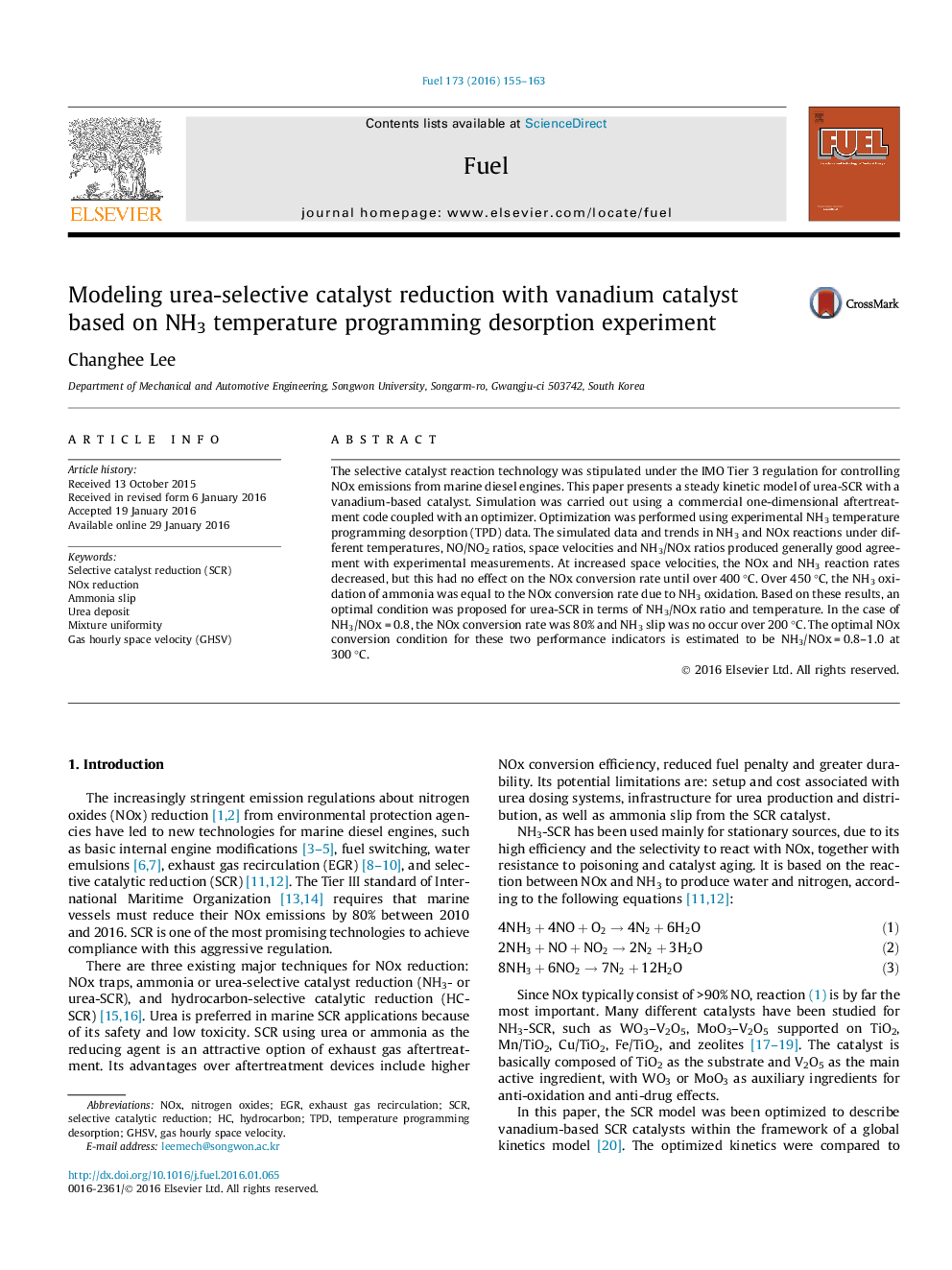| کد مقاله | کد نشریه | سال انتشار | مقاله انگلیسی | نسخه تمام متن |
|---|---|---|---|---|
| 205235 | 461101 | 2016 | 9 صفحه PDF | دانلود رایگان |

The selective catalyst reaction technology was stipulated under the IMO Tier 3 regulation for controlling NOx emissions from marine diesel engines. This paper presents a steady kinetic model of urea-SCR with a vanadium-based catalyst. Simulation was carried out using a commercial one-dimensional aftertreatment code coupled with an optimizer. Optimization was performed using experimental NH3 temperature programming desorption (TPD) data. The simulated data and trends in NH3 and NOx reactions under different temperatures, NO/NO2 ratios, space velocities and NH3/NOx ratios produced generally good agreement with experimental measurements. At increased space velocities, the NOx and NH3 reaction rates decreased, but this had no effect on the NOx conversion rate until over 400 °C. Over 450 °C, the NH3 oxidation of ammonia was equal to the NOx conversion rate due to NH3 oxidation. Based on these results, an optimal condition was proposed for urea-SCR in terms of NH3/NOx ratio and temperature. In the case of NH3/NOx = 0.8, the NOx conversion rate was 80% and NH3 slip was no occur over 200 °C. The optimal NOx conversion condition for these two performance indicators is estimated to be NH3/NOx = 0.8–1.0 at 300 °C.
Journal: Fuel - Volume 173, 1 June 2016, Pages 155–163